
Interview with the founder of #girlsinmuseums
The hashtag that claims for women's presence within the art world
November 17th, 2016
"The artworks showcased in our museums reflect and influence our society and our culture," explains Camilla Crescini, who along with Francesca Malagoli founded the social project #girlsinmuseums.
With this as a starting point, it's unbelievable that today, despite those who most frequently visit galleries and museums – and those who post more content about it on social networks – are women, in the art world their presence is still not given the same value as it's given to men's.
"Although women have made huge steps forward toward equality, we must admit a gender gap in our field, as in many other professional areas, still exists" we Camilla explains. "Girlsinmuseums aims to make people understand this gender gap and explore the potential actions that can help to achieve greater equality: to put the women and their experiences right at the core."
Like any proper social movement or protest nowadays, Camilla and Francesca's slogan is building its way through hashtags and reposts. In no time their Instagram account has reached 11,4K and the word spread like wildfire.
We interviewed Crescini Camilla, who told us about the project and helped to shed light on the situation of women in the art world and to understand why we need a radical change. Now.
When did your project start? How did the idea come about?
Camilla Crescini: I had the idea of starting #girlsinmuseums last year in February. It's been a pretty busy month, between museums, exhibitions' openings and travels. I was visiting a gallery or a museum almost every single day. My world view was totally influenced by my experience as a visitor. One morning I was at the Foundation Gio Marconi, to a great retrospective on Maraniello. With me there was Francesca Malagoli, the face – or rather the nape – of what has since become Girlsinmuseums, an adventure we undertook together. I was photographing a work that particularly struck me, when Francesca had the same idea and she paraded right in front of my shot. The picture that came out was a kind of photo inception. That was my eureka moment, "Girls in museums" was born. A phrase that summed up our lives at that time, but that also sounded like a slogan.
In that same period, I was doing a lot of research about women in cultural institutions: how many female curators worked in museums, how many were the works by female artists represented in the permanent collections, how many women visited museums, how many used social networks during their visit... The data were very discouraging.
Only 14% of the Tate Modern artists and 30% of those of Saatchi Gallery are women, only the 47% of managers of small and medium-sized museums are women (and only the 25% in the most important museums, in 2007). Plus, for the same role and responsibilities, women in the cultural field earn 78% less than men.
By contrast, more than 55% of the audience of contemporary art museums are women and it is women who post more content on social networks during the visit (87% vs 13% of the content posted by men). I have done much thinking around this data and they reminded me of the famous Guerrilla Girls' statement: "Only 3% of the artists in contemporary art museums are women, but 83% of the nudes are women." It was 1985 then, but thirty years later the situation had not changed much.
Francesca and I felt the need for strong action to give this issue the attention it deserved, and we had a powerful means to do it: social networks.

What is your relationship with the art world? Have you studied art or embarked on any art projects?
CC: Both Francesca and I have a degree in Communications in the Markets in Art and Culture at the IULM University, we both chose to continue our art studies with the Master's Degree in Arts, Heritage and Markets.
While we were still at uni we had several experiences in the field of cultural and creative industries. As for me, I made many experiences in Italy, working for the FAI, for the milanese photographic fair MIA, for Fuorisalone and AIAP, and also abroad, where I undertook different roles to get a picture as complete as possible (but never exhaustive) of the art world.
In particular, the time I spent working in Switzerland, in Basel, as a gallery assistant was pivotal. For the first time, I had the chance to measure myself with my greatest passion: the curatorship. Thanks to the exhibitions held in the gallery I woven excellent relations with many artists and gallery owners and today I still work as a freelance curator for small companies in Italy and Europe. The last exhibition I curated was exactly in Basel.

Another significant experience was working for CidaCo, English organisation based in Leeds that deals with activities in the field of cultural and creative industries around the world. Working as project and communication manager, my approach towards work grew a lot.
Francesca has worked with some galleries in Milan and abroad: Raffaella Cortese, Page Gallery and Gallery Podbielski. Always being more drawn to the business side, she has also embarked on an experience at Phillips Auction House.
We started our career together working as Girlsinmuseums on the social communication for the exhibition Game Video/Art. A Survey into the frame of the XXI International Triennale di Milano; on the planning and management for the Instagram communication of Gianni Romano campaign for the City of Milan; and for Invasioni Digitali.
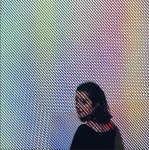
On which basis do you usually choose photos to post on your feed?
CC: Content curation is definitely an essential and indispensable aspect of #girlsinmuseums but we want to leave the process as genuine as possible, thus it's always in the making, depending on the news of the day.
What we pay special attention to are the proper timing and the number of posts.
What we look for when we daily choose the two pictures to post is the correspondence between the two images, the coherence of the subject with the topic of our gallery, originality, eccentricity, setting and location.
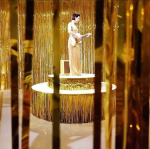
What do you think we could do to increase the percentage of women involved in the art field and break down the prejudices?
CC: The road is uphill. We must realise how important the legitimacy of an artist (thus, of a female artist) is on the market today. Until the market will be sensitive to large investments made, it will be very hard for female artists to make their way in this world.
Surely, those shows that relegate women's artworks to a strictly gender-defined sphere (those exhibitions that aim to bring together all the Italian female photographers, all the American female painters of a certain era, or all the female artists of the 70s) are worthless. They do nothing but bind them in their "being a woman" and not in their capacity. Instead, we shouldn't be making any gender distinction.
Women's and men's feelings are different and, inevitably, this is reflected in their work as artists. What we should now aim to is to affirm our being women quietly and leave the gender issue into the background if we really want to succeed in obtaining the same positions.

Why do you think your account has reached the numbers today in so little time?
CC: I think #girlsinmuseums' success is due to the fact we caught an unheard request and spoke to a niche audience, that of women, girls, students, mothers, workers who, before being "women" are just passionate about art.
Every day we deal with a delicate subject, that of the gender gap, in a light but meaningful way, thanks to the contributions of who's living this gap on their skin.
For example, throughout the month of March, we joined the National Museum of Women Arts and seventy other cultural realities to share content about women artists. The campaign, called #5womenartists, brought to the bitter discovery it was difficult to mention the name of five women artists. This has shown a worrying lack even in art history, which focuses on the study of male artists.
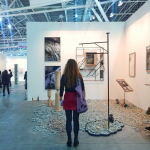
Social media allow any cultural matters to reach their public through creative and innovative ways. Museums and foundations around the world have begun to use these tools as sharing platforms to approach and sensitise the public through a new interactive experience. This wider knowledge sharing makes #girlsinmuseums different from more traditional means of communication.
#girlsinmuseums' real strength is to continually challenge itself, always finding new ways to reach our audience.
And we do it at no cost: we haven't spent a single quid so far, and we didn't have to compromise and lower the quality of content of our project. Of course, it requires a lot of time and effort, and programming requires a lot of attention and a lot of work, but our efforts are rewarded by the enthusiasm of those who discover #girlsinmuseums, by our passion and our tenacity.
I think that's a significant sign, too. Our generation has a great desire to do, to realise and to pursue something and yet we inevitably have to face problems we can't ignore: the lack of budget, the bureaucracy, the very high cost of the input.
#girlsinmuseums is the proof that ideas and strong will can overcome any obstacle.
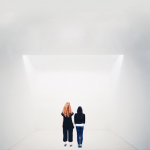
Who are women within the art world that inspire you?
CC: Definitely Lucy Lippard, for her writings and her thoughts. Among the contemporary ones, Raffaella Cortese, for betting on female artists and founding an important gallery in Milan carried out by women only; Paola Antonelli, for her merits in curation, as well as Christian Collu and Christine Macel; and Margaret Doyle, head communications at MoMA, because everyday she makes art accessible to all.
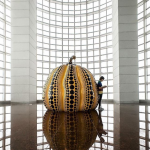
What's in the future for #girlsinmuseums? Do you want to expand, turning it into a platform or in a magazine?
CC: We put lots of energy and hopes to turn #girlsinmuseums into our profession. We are working on our website, we are trying to design it and build it independently, and we'd like to launch it for the first two years of #girlsinmuseums. We'd also like to bring #girlsinmuseums' activities offline with a series of events and projects.
Above all, and this is a real exclusive, we are trying to create a creative #girlsinmuseums agency with the aim of bringing together all those working within the world of culture (from the publisher's galleries), keeping on the work on social networks with professionalism, creativity and strategic vision.
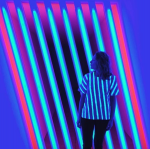
You started your project on Instagram. What role do you think social networks can play for female artists?
CC: Some studies (Silverstone 1992 Hooper-Greenhill 1999, Pearce 1995) show how museums and cultural sites are above all communicators.
Through collections and exhibitions, and through the promotion of art history, museums and foundations influence our culture and society. Similarly, artists can choose social media as a promotional tool for themselves, of course, bearing in mind that a contact with a gallery is vital today to have a presence.
Many social, cultural and economic changes are transforming the role and importance of cultural institutions. The museum, the gallery and the artwork are not just spaces you go visit and see but should be considered as a metaphor through which the company symbolises the relationship with its own history and other cultures. Thus, art becomes a privileged field to test innovative communication strategies.
The web has always been perceived as a tool that connects people, and the concept has been stressed after the launch of Web 2.0 along with social media, a revolution that turned people from simple users into content producers and curators.
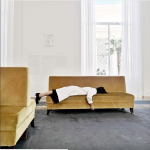
So the potential for the artists is huge, especially in terms of engagement, brand awareness and brand image. Thanks to social networks, artists have the chance to share their most interesting and up to date contents – such as videos, photos, events. At the same time, users can participate, comment and even create content themselves.
Social networks are now the easiest and quickest way that artists have to reach new users and therefore also galleries.
In addition to that and perhaps more importantly, it's the possibility offered by social networks to create a dialogue "from many to many" with users that are part of a certain community. In this case, all the professionals who are interested in discovering new artists, as Behance and Artsy, play an increasingly important role.
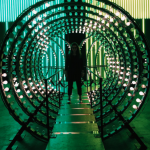
Anyway, without a proper radical transformation strategy, social media are likely to become just one of the many technology trends that will be forgotten with time.
Abandoning the top-down approach, the artists, museums and galleries are now looking for new ways to generate value. Such research is translated into being constantly present, in the circularity of information, in the testing of platforms of online communication.
Social media sure are a fascinating and challenging opportunity. To understand how people interact, to listen and find niches of interest, to join conversations, to create communities: these are some of the reasons why today more and more artists use social media as a tool to communicate with their public.
Cover by Alessandro Bigi





































.jpg)




























